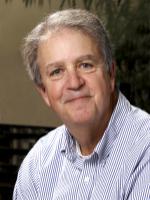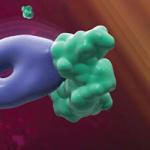
James Putney, Ph.D.
Scientist Emeritus
Signal Transduction Laboratory / Calcium Regulation Group
NIEHS
Research Topics
When hormones, neurotransmitters or growth factors activate calcium signaling through the formation of inositol 1,4,5-trisphosphate (IP3), the rise in intracellular calcium ([Ca2+]i) is typically biphasic. The initial rise results from a direct effect of IP3 on the ligand-activated calcium channels in intracellular Ca2+-storing organelles. This release of intracellular Ca2+ is transient in nature and is usually followed by a more sustained elevation of the intracellular Ca2+ concentration ([Ca2+]i) due to Ca2+ entry across the plasma membrane. The predominant mechanism by which phospholipase C-coupled receptors activate Ca2+ entry is an indirect one. Ca2+ entry across the plasma membrane is coupled to the IP3-mediated depletion of intracellular Ca2+ stores, a process termed capacitative calcium entry or store-operated calcium entry (SOCE). In the past few years, the major molecular players in SOCE have been revealed: STIM1 and 2 which function as sensors for the Ca2+ level in the ER, and Orai1, 2 and 3 which are the pore-forming subunits of the SOC channel. Much of our work focuses on understanding the function and regulation of SOCE, especially in the context of these molecular entities.
In addition to SOCE, many cells possess alternative mechanisms for regulating Ca2+ fluxes across the plasma membrane. One family of Ca2+-permeable channels that we and others have investigated is the TRPC channel family. These channels are activated downstream of phospholipase C. It is controversial as to whether they can function as SOC channels, but it is clear that they can function in a non-SOC mode. Much of our work focuses on this ion channel family, especially in attempts to understand mechanisms of their activation and regulation.
The approach of the laboratory is to combine cell biological, molecular and biophysical approaches to understanding the function and regulation of phospholipase C-coupled channels. In addition, we are currently utilizing mouse models, lacking either Orai1 or STIM1, to better understand the role of this pathway in various physiological contexts.
Biography
Dr. Putney received his Ph.D. from the Medical College of Virginia, and held academic posts at Wayne State University and the Medical College of Virginia where he achieved the rank of Professor of Pharmacology. His current position is Chief, Calcium Regulation Group, Laboratory of Signal Transduction, National Institute of Environmental Health Sciences. Formerly he served as Chief of the Laboratory of Cellular and Molecular Pharmacology. He also holds positions as Adjunct Professor of Pharmacology at the University of North Carolina, and Affiliate Professor of Pharmacology and Toxicology, Virginia Commonwealth University.
Selected Publications
- Smyth JT, Beg AM, Wu S, Putney JW Jr, Rusan NM. Phosphoregulation of STIM1 leads to exclusion of the endoplasmic reticulum from the mitotic spindle. Curr Biol. 2012;22(16):1487-93.
- Fukushima M, Tomita T, Janoshazi A, Putney JW. Alternative translation initiation gives rise to two isoforms of Orai1 with distinct plasma membrane mobilities. J Cell Sci. 2012;125(Pt 18):4354-61.
- Bird GS, Hwang SY, Smyth JT, Fukushima M, Boyles RR, Putney JW Jr. STIM1 is a calcium sensor specialized for digital signaling. Curr Biol. 2009;19(20):1724-9.
- Smyth JT, Dehaven WI, Bird GS, Putney JW Jr. Ca2+-store-dependent and -independent reversal of Stim1 localization and function. J Cell Sci. 2008;121(Pt 6):762-72.
- Vig M, DeHaven WI, Bird GS, Billingsley JM, Wang H, Rao PE, Hutchings AB, Jouvin MH, Putney JW, Kinet JP. Defective mast cell effector functions in mice lacking the CRACM1 pore subunit of store-operated calcium release-activated calcium channels. Nat Immunol. 2008;9(1):89-96.
Related Scientific Focus Areas

Molecular Biology and Biochemistry
View additional Principal Investigators in Molecular Biology and Biochemistry



Biomedical Engineering and Biophysics
View additional Principal Investigators in Biomedical Engineering and Biophysics
This page was last updated on Monday, April 20, 2020